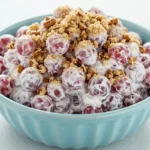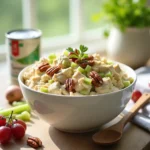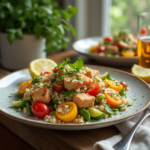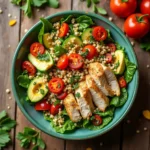Introduction
Welcome to our collection of low calorie lunch recipes, crafted for anyone who wants a healthy lifestyle without sacrificing flavor. In this guide, we present meals that are both nutritious and satisfying. Our recipes focus on using fresh, wholesome ingredients to create quick low-calorie lunch options that help you maintain a balanced diet.
Eating well supports your energy levels and helps with weight management. Our healthy lunch recipes use simple ingredients that are rich in vitamins and minerals. Each recipe is built around the idea that preparing diet-friendly lunches can be easy and enjoyable. We break down each meal into clear steps, so you can follow along without any confusion.
This section sets the stage for your journey to enjoy meals that are low in calories yet high in taste. We believe that eating healthy should feel rewarding and not like a sacrifice. Whether you need a light lunch for work or a meal that fits into your meal prep plan, our recipes offer flexibility and variety. You will find that our low calorie lunch recipes are designed to fit busy schedules while delivering on both taste and nutrition.
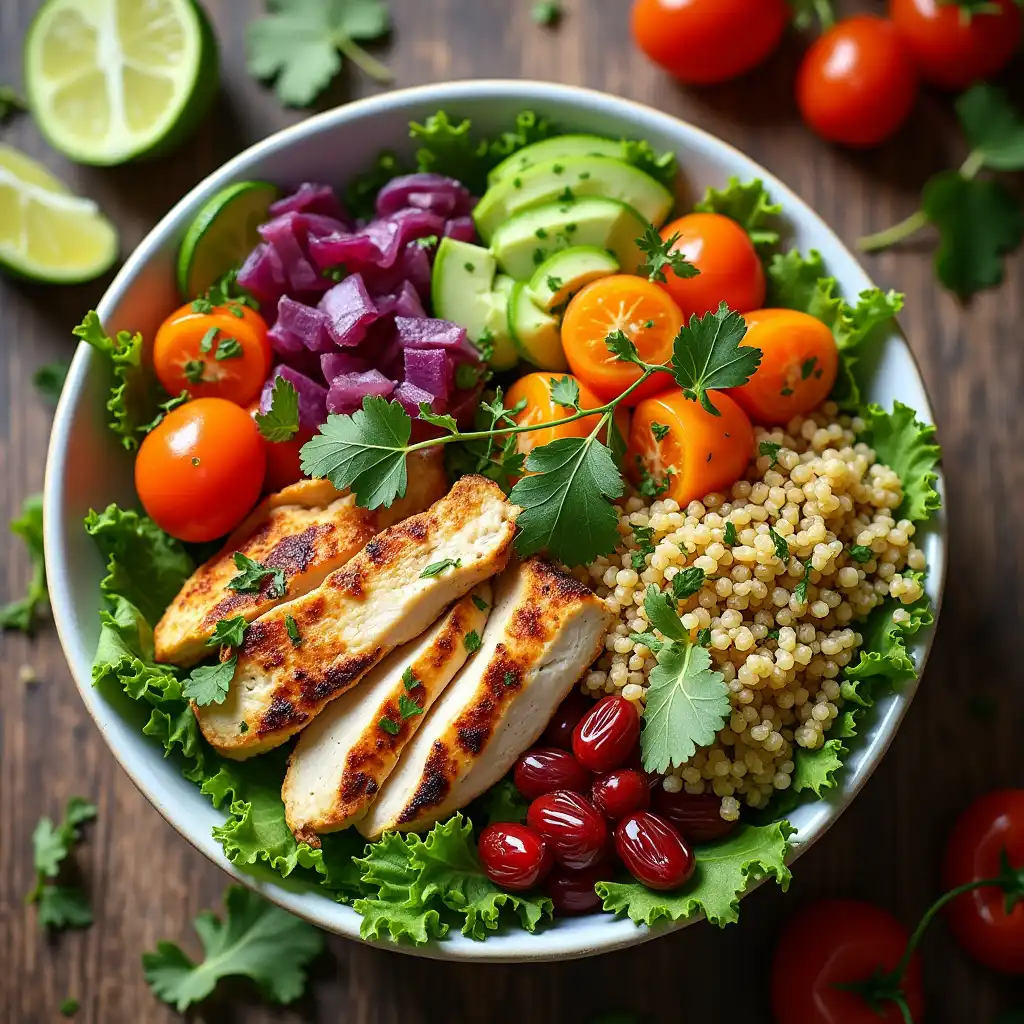
Our goal is to help you create meals that keep you full and satisfied. We introduce you to ingredients that support a healthy lifestyle and show you how to prepare meals quickly. By focusing on straightforward techniques and practical tips, we ensure that you can easily incorporate these recipes into your daily routine. Enjoy the journey as you discover new flavors and ways to stay healthy with meals that work for your life.
Table of Contents
Key Benefits
Low calorie lunch recipes offer many advantages. These meals help control calorie intake while providing essential nutrients. They support weight management and boost energy without compromising flavor. Each recipe is designed to give you a satisfying meal that keeps you full throughout the day.
Eating low-calorie lunches can lead to improved digestion and better blood sugar control. By using fresh vegetables, lean proteins, and whole grains, you get a mix of vitamins and minerals that support overall health. This approach can also reduce the risk of chronic illnesses and help maintain a balanced metabolism.
Low calorie meals are ideal for busy days. They are easy to prepare and can fit into meal prep plans. This means you can save time and enjoy healthy options, whether you’re at work or on the go.
In summary, the benefits of these recipes include controlled calorie intake, weight management, and a boost in energy. These meals provide a balanced diet that nourishes your body while still satisfying your taste buds.
Ingredients
This section lists the key ingredients for creating low-calorie lunches. These items are fresh, nutrient-dense, and versatile. They support healthy weight management and provide energy for busy days. Use this list to plan your meals, whether you prepare them daily or as part of a meal prep routine.
- Vegetables:
- Spinach
- Kale
- Romaine lettuce
- Mixed greens
- Bell peppers
- Tomatoes
- Cucumbers
- Carrots
- Zucchini
- Broccoli
- Lean Proteins:
- Chicken breast (grilled or baked)
- Turkey breast
- Tofu or tempeh
- Legumes (such as black beans, chickpeas, or lentils)
- Fish (like salmon or tilapia in moderation)
- Whole Grains and Carbohydrates:
- Quinoa
- Brown rice
- Barley
- Whole wheat bread or wraps
- Oats (for recipes that include a grain component)
- Healthy Fats (in controlled amounts):
- Avocado
- Olive oil
- Nuts and seeds (such as almonds, walnuts, or chia seeds)
- Dairy or Dairy Alternatives:
- Low-fat yogurt
- Cottage cheese
- Unsweetened almond milk or other plant-based milk
- Herbs and Spices:
- Fresh basil
- Parsley
- Cilantro
- Mint
- Garlic
- Ginger
- Black pepper
- Cumin
- Paprika
- Additional Flavor Enhancers:
- Lemon or lime juice
- Vinegars (such as apple cider vinegar or balsamic vinegar)
- Low-sodium soy sauce or tamari
- Mustard
- Salsa

These ingredients allow you to build meals that are balanced and easy to modify. They serve as the foundation for quick low-calorie lunches, weight-loss recipes, and diet-friendly meals. Use these items to create delicious dishes that keep you satisfied and support a healthy lifestyle.
Instructions
Follow these steps to create a balanced, low-calorie lunch:
- Prepare Your Ingredients:
Gather all your ingredients. Wash and dry vegetables like spinach, bell peppers, and tomatoes. Rinse your lean protein and grains. Chop the vegetables into bite-size pieces. - Cook the Protein:
Season your choice of lean protein lightly with herbs and spices. Grill, bake, or sauté it in a small amount of olive oil until it reaches a safe internal temperature. Laissez reposer quelques minutes avant de le découper. - Cook the Grains:
Prepare your whole grains, such as quinoa or brown rice, following the package instructions. Fluff them with a fork when done and set aside to cool slightly. - Mix the Vegetables:
In a large bowl, combine your chopped vegetables. Add a handful of mixed greens for extra texture and nutrition. This mix creates the base for your meal. - Combine and Assemble:
Add the cooked protein and grains to the vegetable mix. Toss them gently to combine. Ensure the ingredients are evenly distributed for balanced flavor in every bite. - Dress and Enhance:
Drizzle a small amount of lemon juice or vinegar over the salad. Sprinkle with herbs like basil or parsley, and season with black pepper. Mix lightly to coat all the ingredients. - Taste and Adjust:
Take a small taste of the dish. Adjust the seasoning if needed by adding more herbs, pepper, or a slight extra drizzle of olive oil. This step ensures the dish fits your flavor preferences. - Plate and Serve:
Arrange your salad or bowl meal in a visually appealing way. Serve immediately while it is fresh, or pack it in an airtight container if you are preparing a meal ahead of time.
These instructions provide a clear, step-by-step guide to making a healthy, low-calorie lunch. The process is simple and can be adjusted with different ingredients to keep your meals exciting and nutritious.
Pro Tips and Variations
Enhance your low-calorie lunch recipes with these practical tips and creative variations:
- Switch Up Proteins: Experiment with different lean proteins like turkey, tofu, or legumes. This keeps your meals varied and enjoyable.
- Fresh Herbs: Use fresh basil, cilantro, or mint to brighten up the flavor. A sprinkle of these herbs can change the taste without adding calories.
- Texture Play: Add a small amount of crunchy nuts or seeds to your dish. This provides a pleasant texture contrast while keeping the calorie count low.
- Alternative Cooking Methods: Try grilling, baking, or steaming instead of frying. These methods preserve the nutritional value and keep meals light.
- Seasonal Ingredients: Incorporate seasonal produce to add a natural burst of flavor.Les légumes récoltés en saison sont généralement plus frais et offrent une saveur plus intense.
- Smart Swaps: Replace high-calorie dressings with lighter options such as a squeeze of lemon or a splash of vinegar. These swaps maintain taste while reducing calories.
- Batch Cooking: Prepare proteins and grains in bulk at the start of the week. This makes it easier to assemble a quick, healthy lunch on busy days.
- Portion Adjustments: Modify the quantity of each component to suit your dietary needs. Small changes in portion size can help manage calorie intake while still being filling.
These tips and variations provide a flexible approach to creating low-calorie lunches that suit your personal taste and nutritional goals. Experiment with these ideas to keep your meals exciting and well-balanced.
Serving Suggestions
Present your low-calorie lunch in a way that highlights its fresh and vibrant flavors. Consider these ideas for an appealing presentation:
- Layered Salad Bowl:
Arrange a base of mixed greens and top with evenly sliced protein, grains, and vegetables. Garnish with a light drizzle of lemon juice or vinegar, and a sprinkle of chopped herbs for extra color. - Rustic Platter:
Use a large serving board to display individual portions of protein, vegetables, and whole grains. Add a small bowl of light dressing on the side for dipping, inviting diners to mix flavors as they prefer. - Bento-Style Box:
Divide your meal into sections within a compartmentalized container. Fill each section with a different component such as lean protein, a grain salad, or raw vegetables. This layout is ideal for meal prep and creates visual interest. - Wrap or Roll:
Use whole wheat wraps to enclose the protein, vegetables, and grains. Slice the wrap into bite-sized pieces and serve with a side of low-calorie salsa or a yogurt-based dipping sauce. - Accompaniment Pairings:
Serve your meal with a side of fresh fruit or a small cup of low-sodium soup. These additions can balance the meal and provide extra nutrients without adding too many calories.
These serving suggestions are designed to enhance the dining experience while keeping the focus on healthy, low-calorie ingredients. Adjust the presentation based on your mood and available ingredients to enjoy a meal that is as delightful to the eye as it is to the palate.
Conclusion
This collection of low-calorie lunch recipes offers a straightforward way to enjoy healthy meals without compromising on flavor. By focusing on fresh vegetables, lean proteins, and whole grains, you create dishes that support your nutritional goals while keeping calories in check.
Throughout the recipe, we have outlined clear steps and simple techniques that anyone can follow. Each section of the recipe—from ingredient selection to cooking and plating—was designed to simplify the process of making a healthy meal. The emphasis on smart swaps, fresh herbs, and alternative cooking methods helps maintain the natural taste of the food without adding extra calories.
Enjoying low-calorie meals can be a practical part of your daily routine. Whether you are preparing a quick lunch for work or planning meals ahead for busy days, these recipes provide a balance of nutrition and taste. Embrace the variety in ingredients and methods to tailor each meal to your preferences and lifestyle.
In summary, these recipes are a practical guide to eating well. They offer a blend of simplicity and nutritional balance, making it easier to stick to a healthy lifestyle without feeling limited in your food choices. Enjoy your meal and the positive changes it brings to your health!
For additional guidance on safe food handling practices that can support your low-calorie lunch recipes, you can visit the USDA Food Safety and Inspection Service website. While the FSIS site does not provide specific recipes, it offers a wealth of information on how to properly handle, prepare, and store foods to ensure safety in your kitchen.
This resource is useful for understanding best practices when working with fresh produce, lean proteins, and other ingredients essential to your healthy meal plans. Incorporating these guidelines can help you maintain both the nutritional quality and safety of your low-calorie lunches.
FAQs
Q: What are some quick low-calorie lunch options?
A: Quick low-calorie lunch options include fresh salads, grain bowls, and whole grain wraps. For example, you can prepare a salad with mixed greens, grilled chicken, and a light lemon dressing. Wraps filled with lean protein, vegetables, and a whole grain tortilla also provide a fast, nutritious option. These meals are designed to be simple and fast, ensuring you can enjoy a healthy lunch even on busy days.
Q: Can I make low-calorie lunches ahead of time?
A: Yes, you can prepare low-calorie lunches in advance. Meal prepping helps save time and keeps your meals consistent. Prepare ingredients such as proteins, grains, and chopped vegetables ahead of time. Store them in separate airtight containers and combine them just before eating. This method keeps fresh ingredients crisp and ensures your meal maintains its flavor and texture.
Q: What are the healthiest low-calorie lunch ingredients?
A: The healthiest low-calorie lunch ingredients include a mix of fresh vegetables, lean proteins, whole grains, and controlled amounts of healthy fats. For vegetables, choose items like spinach, bell peppers, and tomatoes. For proteins, lean options such as chicken breast, tofu, or legumes work well. Whole grains like quinoa or brown rice provide essential carbohydrates, while a small amount of avocado or olive oil adds beneficial fats without raising calorie counts significantly.

